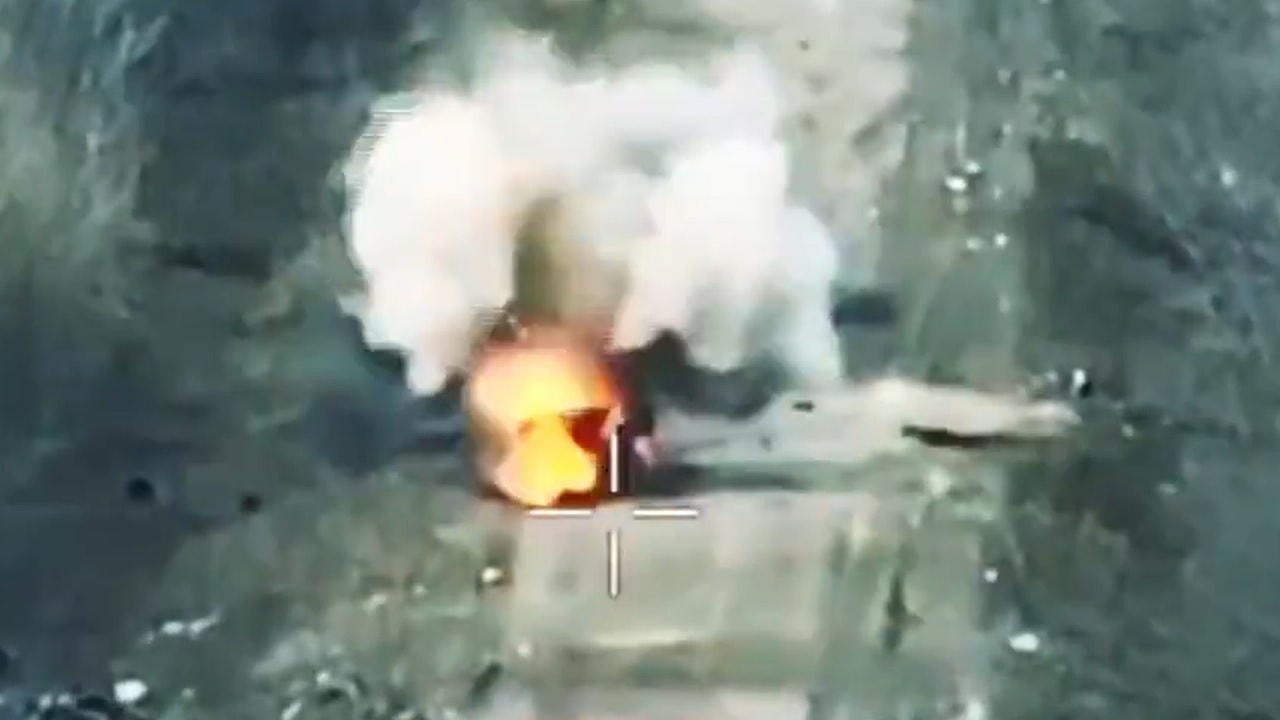CNN reported on Monday that Ukrainian forces might be reconsidering plans for an expected counteroffensive in eastern Ukraine following a massive leak of classified American documents.
Citing comments from Colonel General Oleksandr Syrskyi, the commander of the Ukrainian ground forces, Reuters reported that Russian troops continue “pounding” Ukrainian positions in and around Bakhmut.
Syrskyi reportedly described how Russian forces have adopted “scorched earth” tactics in Bakhmut, as they did in Syria, resulting in the total destruction of buildings and Ukrainian positions in the area using air strikes and artillery fire. The tactics could prove to be just what the Russians needed, too, with Russian authorities claiming that invaders now control 75% of the city.
In an interview with Russian state media outlet Rossiya 24 TV, the Russian-installed leader of occupied Donetsk, Dennis Pushilin, described how Russian forces are finally taking control of the city after more than a year of conflict and several months of particularly intense fighting in Bakhmut.
“I can say with absolute certainty, that more than 75% of the city is under the control of our units,” Pushilin said.
Last week, Wagner Group forces reached the center of the eastern Ukrainian city. It follows months of intense fighting that saw the Russian side lose thousands of private mercenaries and soldiers, as well as substantial quantities of military hardware, weapons, and ammunition. In March, British diplomat Ian Stubbs estimated that as many as 30,000 Russian personnel had been injured or killed in Bakhmut since May, 2022.
What Was in the Leaked Documents?
Speaking to Reuters on Friday, unnamed Ukrainian officials said the leaked documents contained inaccurate information and fictitious stories created by Russian propagandists. According to U.S. officials who spoke to CNN, however, the documents also contain authentic reports and intelligence, revealing some examples of U.S. officials listening in on private calls between officials in allied countries, including Ukraine, Israel, and South Korea.
Some of the documents revealed in the massive leak, which has reportedly been going on for several weeks, also expose some of Ukraine’s biggest weaknesses on the battlefield. The documents reportedly include information about Ukrainian battalion sizes, the state of the country’s air defenses, and key weapons in use on the battlefield.
On Thursday, April 6, the Pentagon confirmed that an investigation was underway to determine the source of classified documents that reportedly emerged on social media.
In light of the leak, Ukrainian officials have already reportedly begun changing plans for an expected counteroffensive this spring, according to CNN. The Pentagon also responded to the leaks by taking new steps to secure the sharing of sensitive communications.
In a statement, Pentagon deputy press secretary Sabrina Singh said on Sunday that the Department of Defense will continue to “review and assess the validity of the photographed documents” that emerged online and that an ongoing investigation into the leak involves several government agencies.
The Latest In Bakhmut
Amidst the chaos, however, Ukrainian forces continue to fight. Video footage shared on Facebook by the Ground Forces of the Armed Forces of Ukraine shows how Ukrainian forces continue to engage with Russian forces in Bakhmut. The dramatic video footage, which includes shots recorded from both the ground and the air, shows Ukrainian troops from the 92nd Mechanized Brigade exchanging fire.
“Tankers of the 92nd OMBr named after of the basket chieftain Ivan Sirk, Official page work under Bakhmut,” the post reads.
Russia’s scorched earth tactics in Bakhmut have turned an already abandoned city into a wasteland, with huge residential buildings and civilian infrastructure left either completely destroyed or in states of disrepair.
Ukrainian forces in the region have relied extensively not just on air defense systems and missile launchers supplied by the West, but also on commercially-available drones donated in huge numbers. The drones, often adapted to drop grenades and other munitions from the air, have given Ukrainian forces a reliable and safe way to strike Russian positions, equipment, and vehicles with great precision in Bakhmut – but reports suggest that those drones may not be useful for much longer.
Yaroslav, a 31-year-old Kharkiv resident recruited to fight in Ukraine, told Western reporters how Russian forces use jamming systems designed to take control of DJI drones – and other commercial, non-military drones – while they’re in the air.
“They’re adept and they are manufacturing these special jamming systems,” the Ukrainain soldier said. “So actually, I believe like in three, four months, DJI will not be usable.”
While Russian forces have yet to officially take control of Bakhmut, Moscow could be on the verge of achieving a symbolic victory that forces Western leaders to consider a new approach to making peace in Ukraine. If President Volodymyr Zelenskyy is right, that could include encouraging Kyiv to cede some territory to Moscow in exchange for a ceasefire.
Jack Buckby is 19FortyFive’s Breaking News Editor. He is a British author, counter-extremism researcher, and journalist based in New York. Reporting on the U.K., Europe, and the U.S., he works to analyze and understand left-wing and right-wing radicalization, and reports on Western governments’ approaches to the pressing issues of today. His books and research papers explore these themes and propose pragmatic solutions to our increasingly polarized society.

